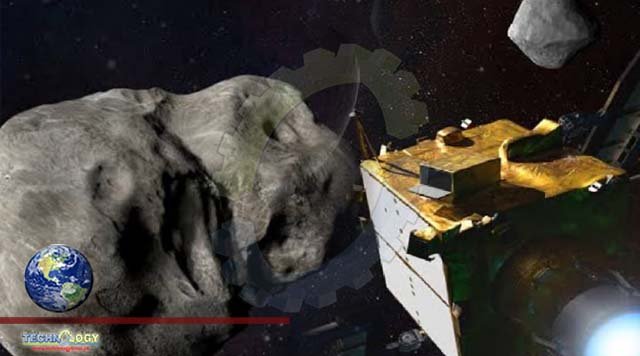The world’s first comprehensive planetary defense test against potential asteroid impacts on Earth is being conducted by NASA as part of the Double Asteroid Redirection Test (DART) project.

The NASA’s Spacecraft , Researchers from the University of Bern and the National Centre of Competence in Research (NCCR) PlanetS have now shown that the impact of the NASA’s Spacecraft on its target might render the asteroid almost unrecognizable rather than leaving behind a relatively tiny crater. The extinction of the dinosaurs is thought to have occurred 66 million years ago as a result of a massive asteroid collision on Earth. No known asteroid presents an immediate danger right now. But if a large asteroid were to be found one day headed straight for Earth, it might need to be diverted off its route to avoid disastrous consequences. The DART space probe, developed by NASA in the US, was launched last November as the first full-scale test of such a maneuver. Its goal is to hit an asteroid and divert it off its orbit in order to gather important data for the creation of a planetary defense system.
Researchers from the University of Bern and the National Centre of Competence in Research (NCCR) PlanetS used a new method to model this impact in a recent study that was published in The Planetary Science Journal. According to their findings, it may damage its target far more severely than previously believed. Contrary to what one might imagine when picturing an asteroid, direct evidence from space missions like the Japanese space agency’s (JAXA) Hayabusa2 probe demonstrates that an asteroid can have a very loose internal structure – similar to a pile of rubble – that is held together by gravitational interactions and small cohesive forces”, says study lead-author Sabina Raducan from the Institute of Physics and the National Centre of Competence in Research PlanetS at the University of Bern. Yet, previous simulations of the DART mission impact mostly assumed a much more solid interior of its asteroid target Dimorphos. “This could drastically change the outcome of the collision of DART and Dimorphos, which is scheduled to take place in the coming September”, Raducan points out. Instead of leaving a relatively small crater on the 160-meter wide asteroid, DART’s impact at a speed of around 24’000 km/h could completely deform Dimorphos. The asteroid could also be deflected much more strongly and larger amounts of material could be ejected from the impact than the previous estimates predicted.
Source: This news is originally published by scitechdaily